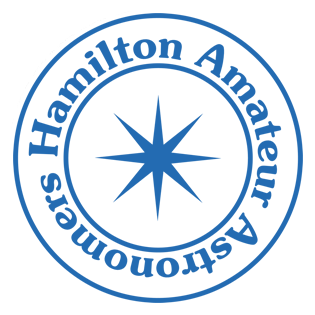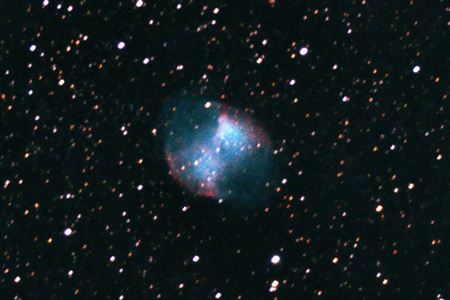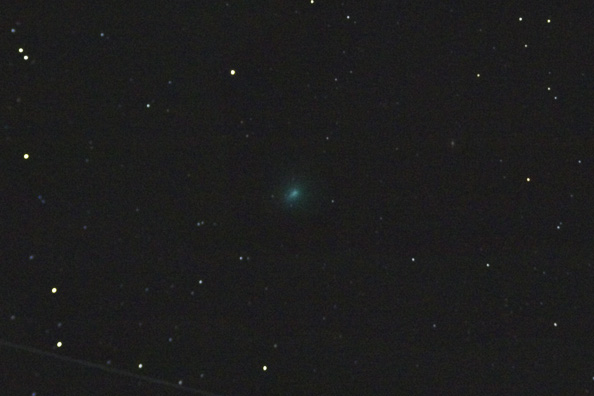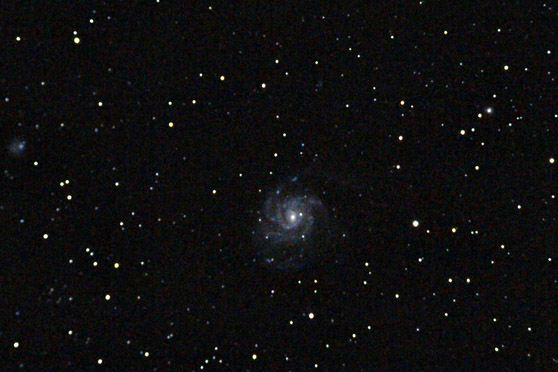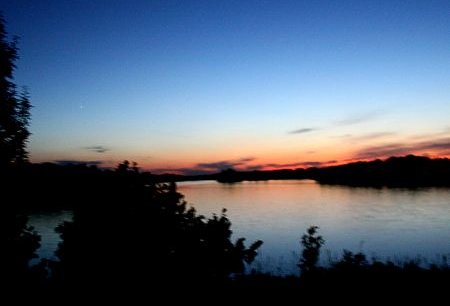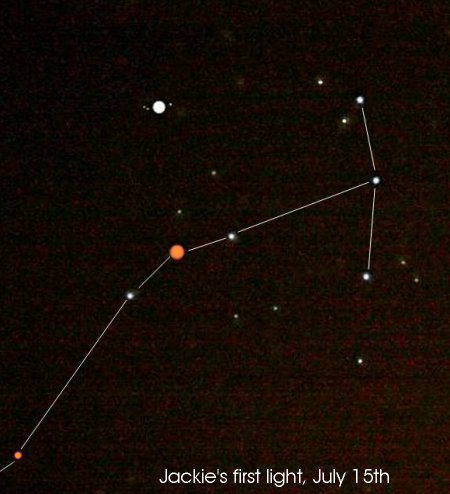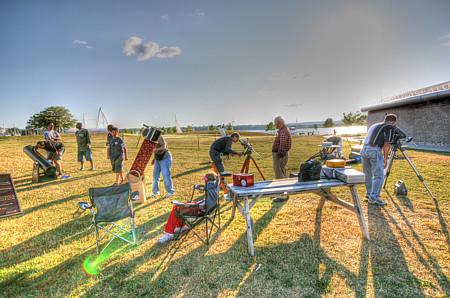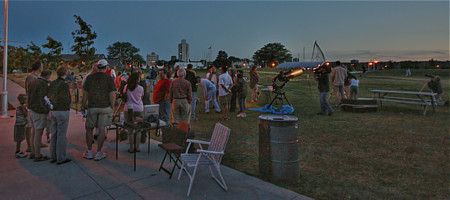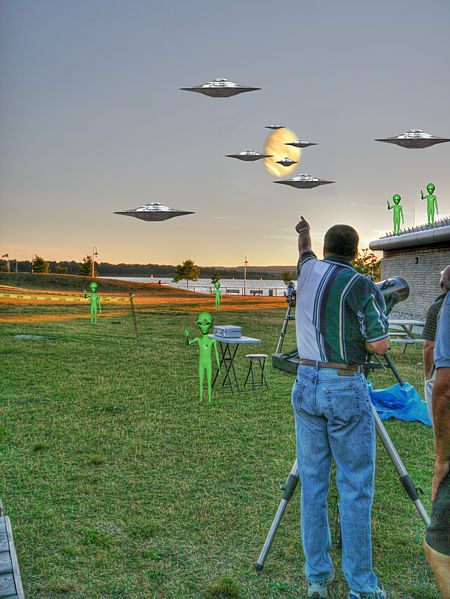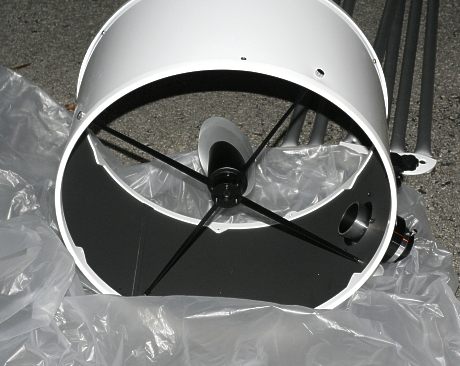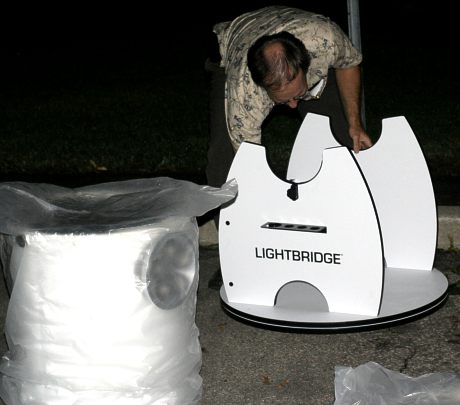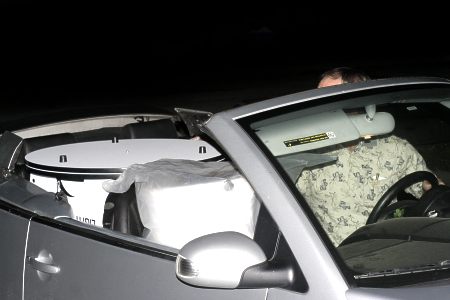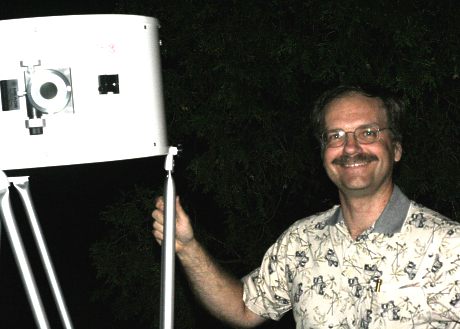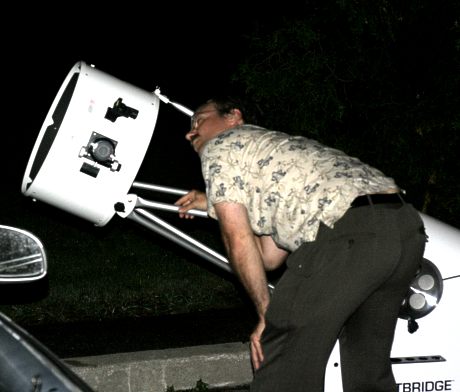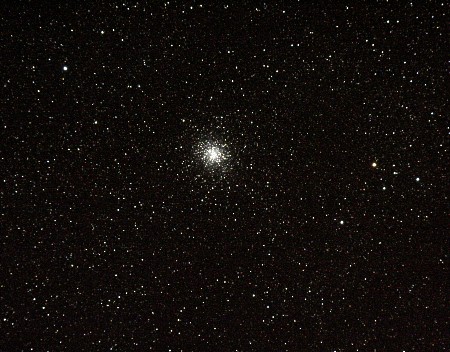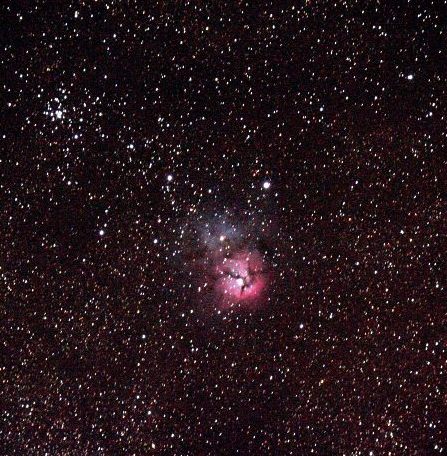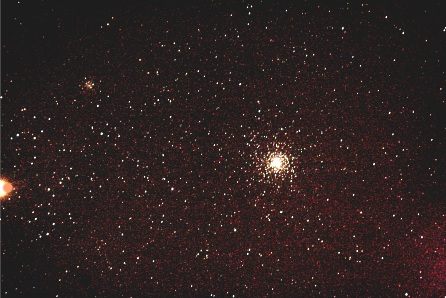By 8:30 the last stragglers were still packing up to leave the park.
I selected a location on the hill with a clear view to the south and west, and a good view to the east, and started unpacking. Having a proper wrench, i was able this time to deploy the equatorial platform. Lots of new gadgets to unpack and set up.
The GWS now has a shroud, expertly assembled by Ann. It’s so fine.
The scope was almost perfectly aligned from last time, and took only a minor touch
on the knobs. I aligned it with the shroud on, no problem. The fully assembled scope on the platform is tall enough to require a 3 step ladder for the zenith. There’s 3 little rubber feet under the base of the Lightbridge 16, and they sit on flat parts of the platform without extra work. I did not try the second axis this time. I might have to add another small pad under the base for it.
We had some new members observing, and they brought a fine refractor on a goto mount.
Even a few non-members brought their scopes and set up.
The equatorial platform is great. It makes finding objects so much easier, and they
just sit there. Since it’s for 43 degrees and the latitude of Binbrook is
43.1 degrees, i just basically leveled it on its 4 feet and pointed the finder at Polaris, and it was ready to go. With a little help from my friends, i had the scope up on the platform and ticking away.
I took the time to assemble and adjust the camera holder. My pocket camera
has auto-focus, and getting it to stop trying was not easy.
I snapped this photo of Jupiter and its moons… (upload will have to wait till i resize the photo)
A tour of the skies with the GWS was in order. I found the following: Jupiter, M57, M13, Mizar and Alcor.
Then on to fainter things…
M31, M92, M27, M70, M29, M54.
I tried the ring nebula with a 5mm lens and a Barlow, making it fill over half
the field of view in the eyepiece.
Th platform kept me on target, as i tried to focus it.
At that magnification, there was blurring of the stars to small blobs, and i think it’s because the focal length is short (and the eyepiece has to be very fancy to cope). I will continue to search for eyepieces up to the task. There was no problem with brightness though. The ring was plain as day even at 731 times magnification.
I tried a camera holder Mike lent me, but it causes the scope to tip forward,
even with the clutch tightened down. I finally need a counterweight.
Jackie sold me her 3 inch scope an diagonal to use as a finder-scope.
Attaching the rings is my next project.
I noticed there’s a place on it to put a smaller finder-scope.
The GWS is so big… 🙂
After about an hour, i noticed that objects were drifting out of the field of view. Strange, the platform had been working so well…
It had reached the end of its travel. 2 good things… it did not dump the scope,
and it took a few seconds to reset by simply grabbing the base of the scope,
lifting slightly and repositioning the platform at the other end of its travel
for another run.
The moon was big and red on the horizon. Smoke from Montana fires is adding to the redness. I pointed the scope at it. In spite of there being another scope, and my car,
in the light path, i still got the moon. It was bright enough once it cleared the car, to project an image onto a sheet of paper the size of a dinner plate. Bye bye night vision.
I bought a new stool to use, but spent very little time sitting.
I am now able to navigate the star charts much quicker, and brought in the dumbell nebula for the final item before packing up.
The dumbell nebula. My red dot is right on, and with a low power eyepiece i found it in seconds. I am so happy with my ability to find things in the sky.
The best part was that although everyone’s scope had dewed up, the shroud on the GWS
kept it nice and dry to the end.
So i am happy, anyway.
